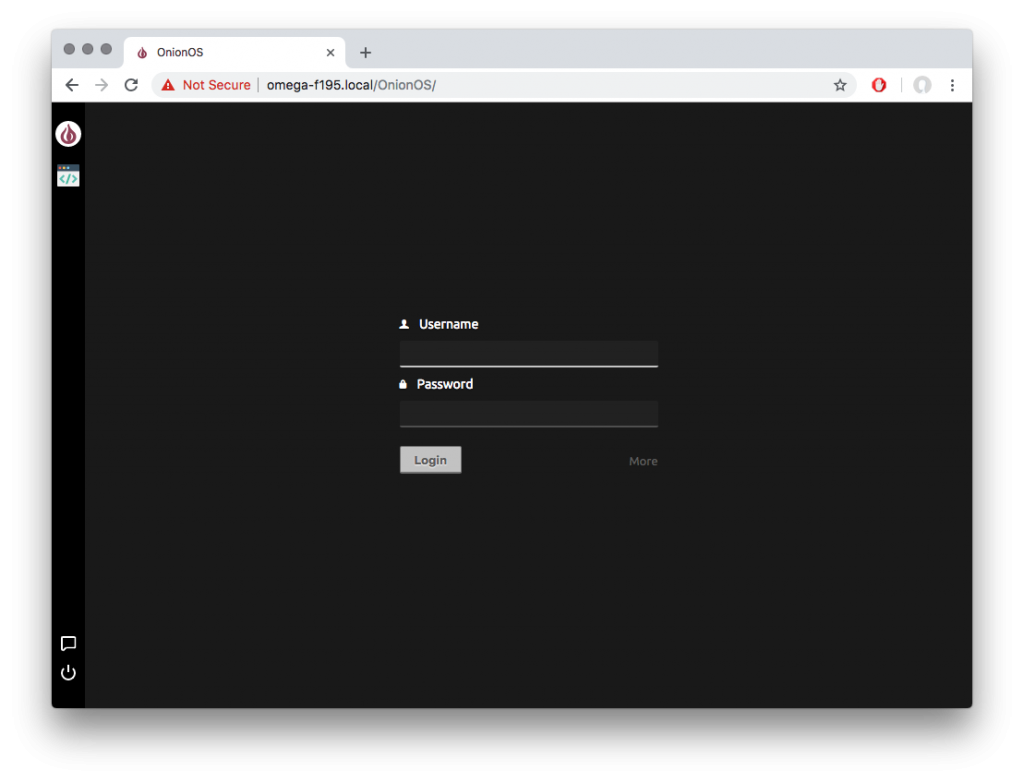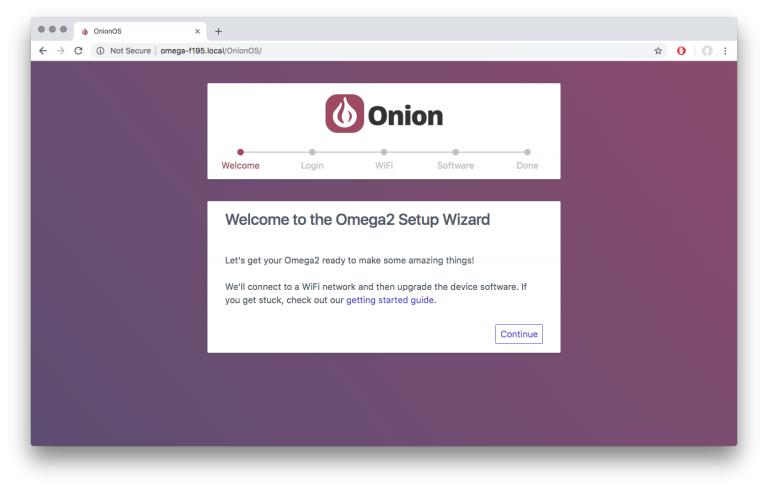
OnionOS is a web-based, graphical user interface for the Omega2 family, with a number of apps that can be used to configure and control your device, and can serve as your development environment.
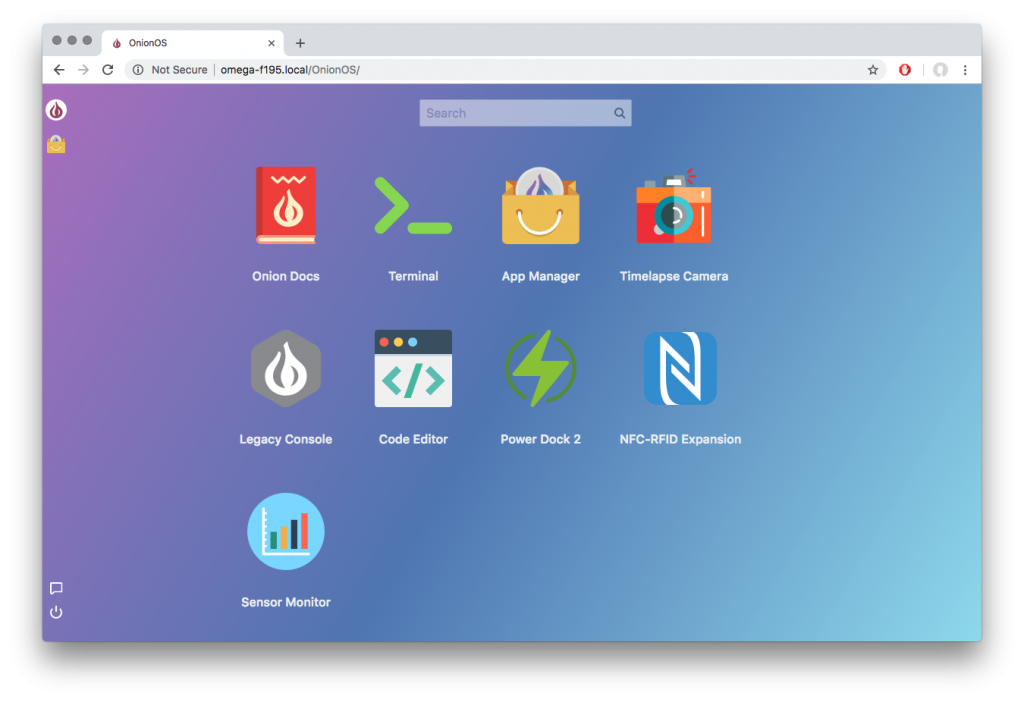
This article provides a short overview on how to use various parts of OnionOS:
Happy hacking!
Browser recommendation:
OnionOS supports all browsers, but we recommend using Google Chrome for best results
Setup Wizard
The Omega2 Setup Wizard is now built-in to OnionOS and provides a graphical, browser-based way of setting up your Omega for the very first time. This involves connecting your Omega to WiFi and then upgrading the firmware if it is not already on the latest available major release.
If your Omega has not yet been configured, the Setup Wizard will automatically appear instead of OnionOS.
To get to the Setup Wizard:
- Connect to your Omega’s WiFi Access Point, it should be called
Omega-XXXXwhere theXXXXare the last four digits from your Omega’s sticker - Use your browser to navigate to
http://Omega-XXXX.local/, where theXXXXare the last four digits from the your Omega’s sticker- If the page doesn’t load, make sure to include that
/at the end of the URL - If it still doesn’t load, try browsing to
http://192.168.3.1
- If the page doesn’t load, make sure to include that
and, if your Omega has not yet been configured, the Setup Wizard will appear.
Click Continue to get started:
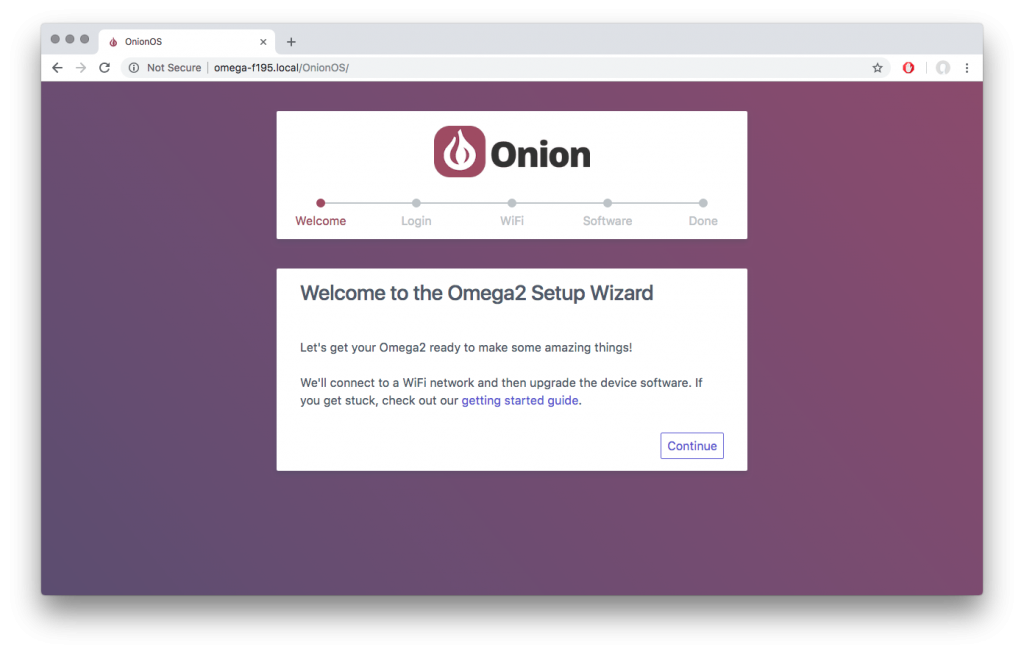
Login
Next, you’ll need to login with the Omega’s default credentials:
username: root
password: onioneer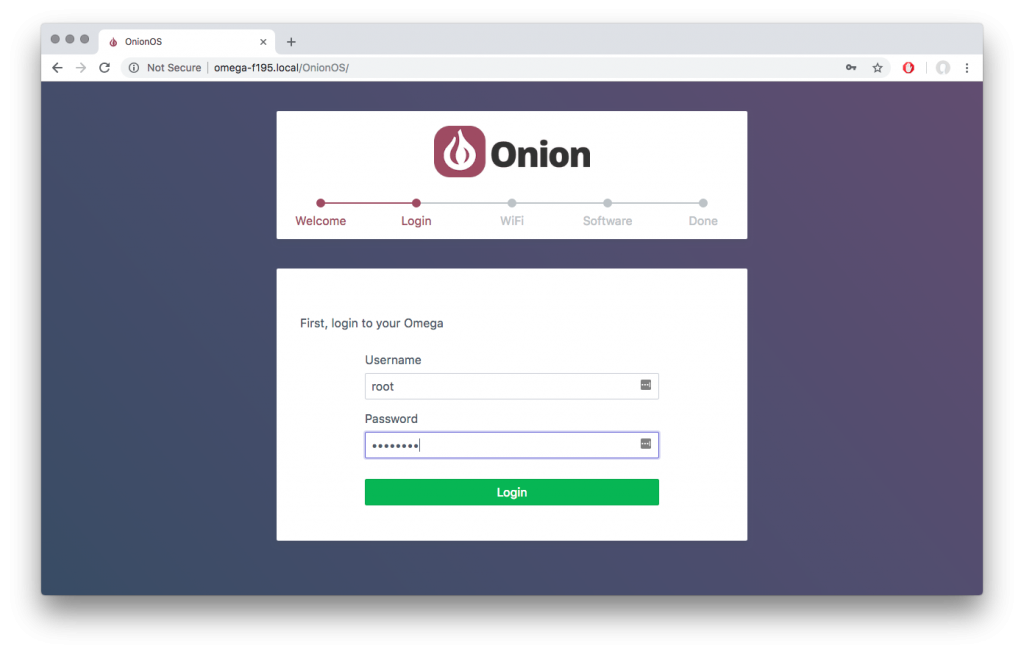
Connect to WiFi
Once you’re logged in, the next step is to connect to a WiFi network with internet access. The Omega will scan the environment for available networks and will show the results in a list.
In our case, we want to connect to the WiFi network (creatively) named MyWiFiNetwork, so we’ll go ahead and click on it:
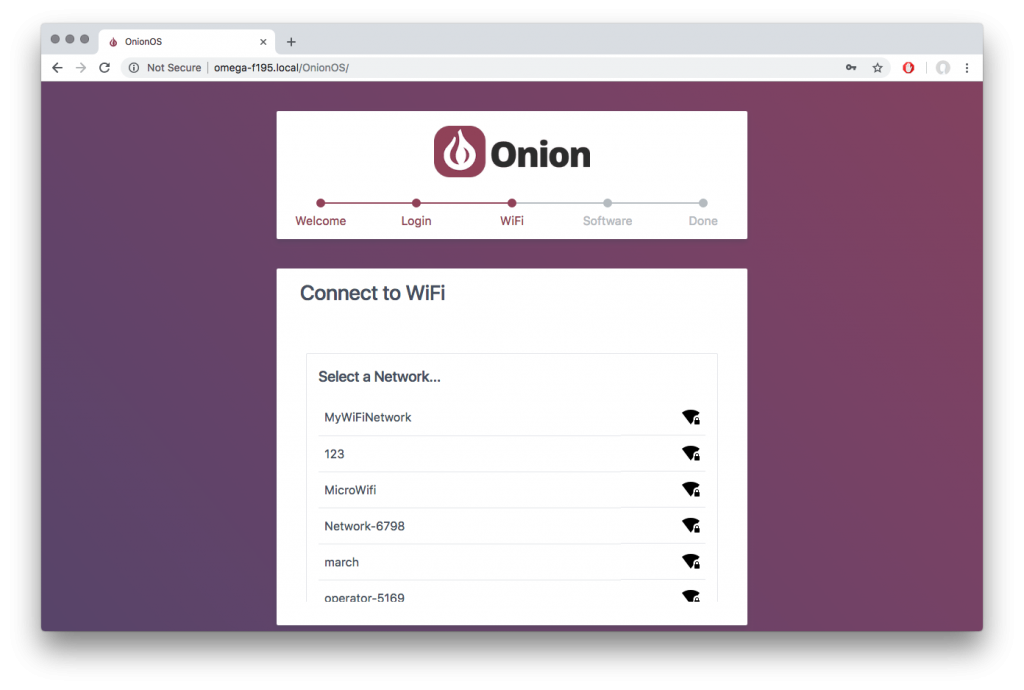
This will open a prompt to enter the network password, if the network requires a password:
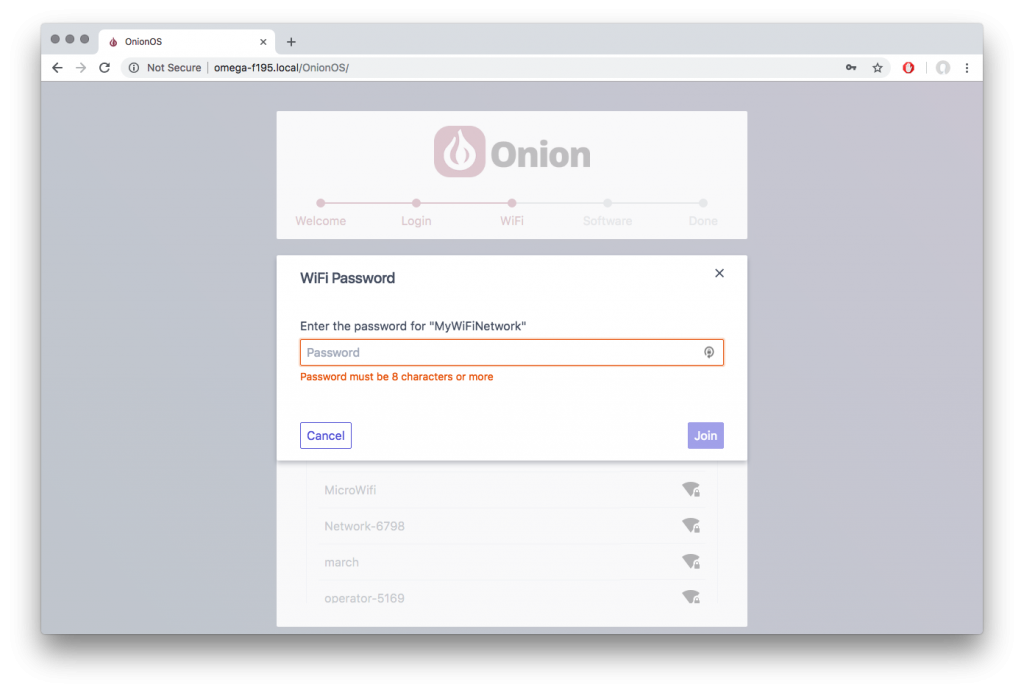
Notice how you’ll only be able to click Join when the password length requirements have been met:
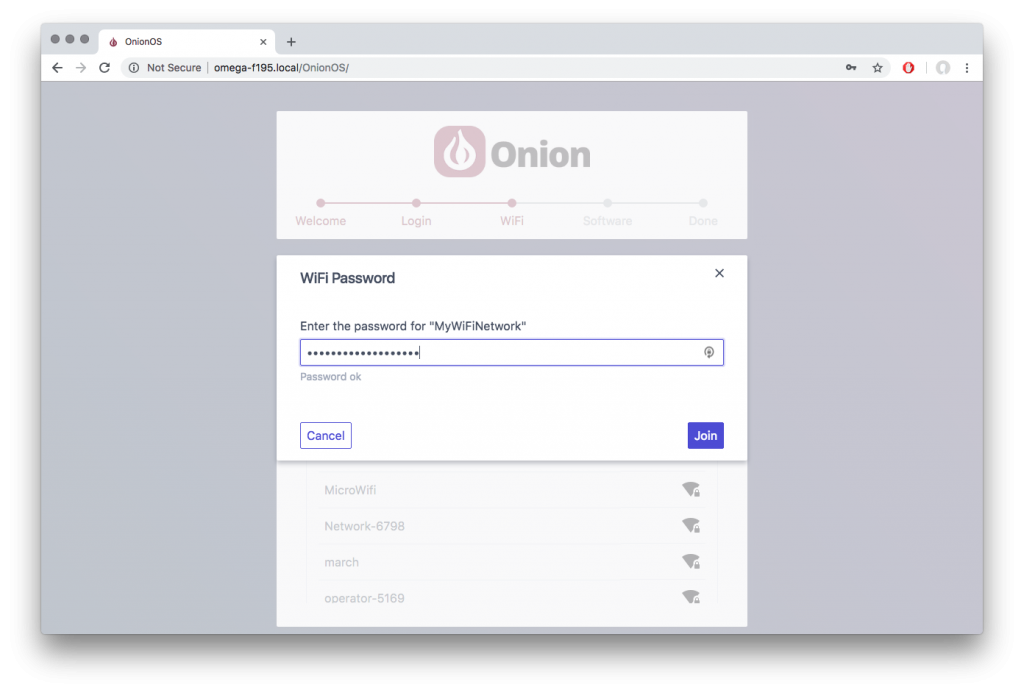
Once you click Join, your Omega will attempt to join the network. This might take up to a minute.
It’s possible that your computer will disconnect from the Omega’s WiFi Access Point, make sure to reconnect if that happens!
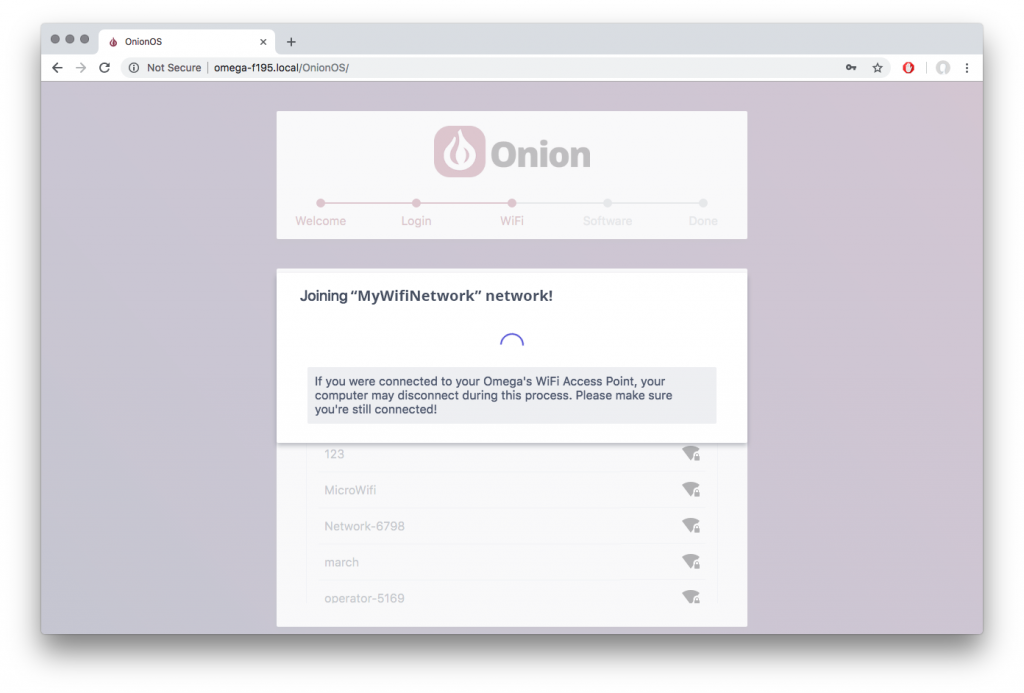
When the Omega successfully connects, you’ll see a notice, and the Setup Wizard will automatically proceed to the next step in a few seconds:
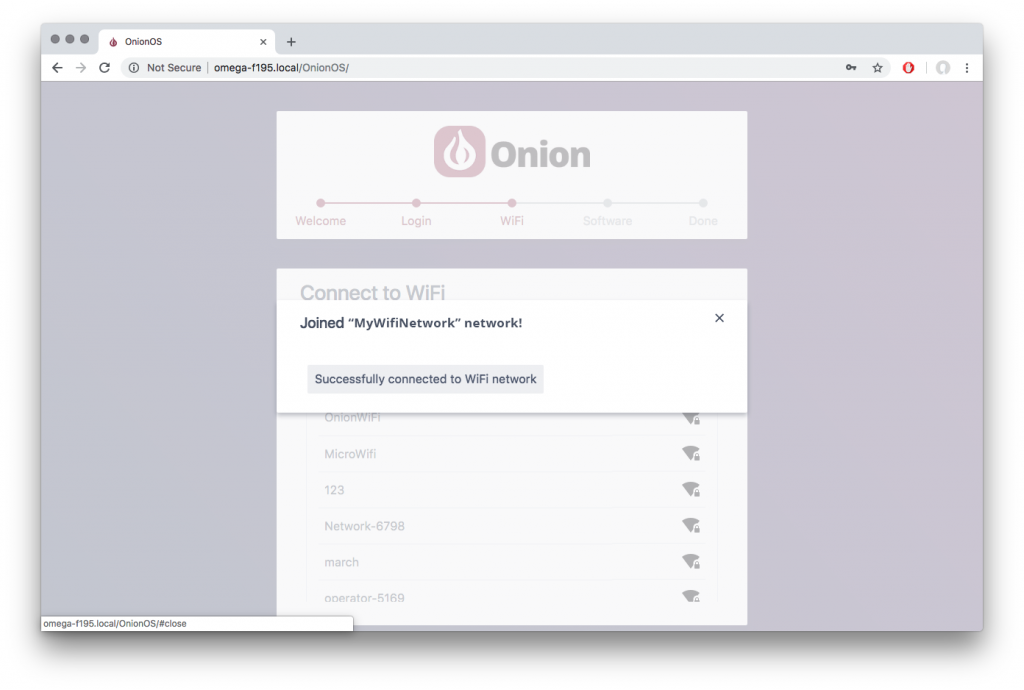
Software Updates
Now that your Omega is connected to the internet, it will check if software updates are required.
If no updates are required, you can just hit Continue to move on to the final step, and skip down to the All Done section
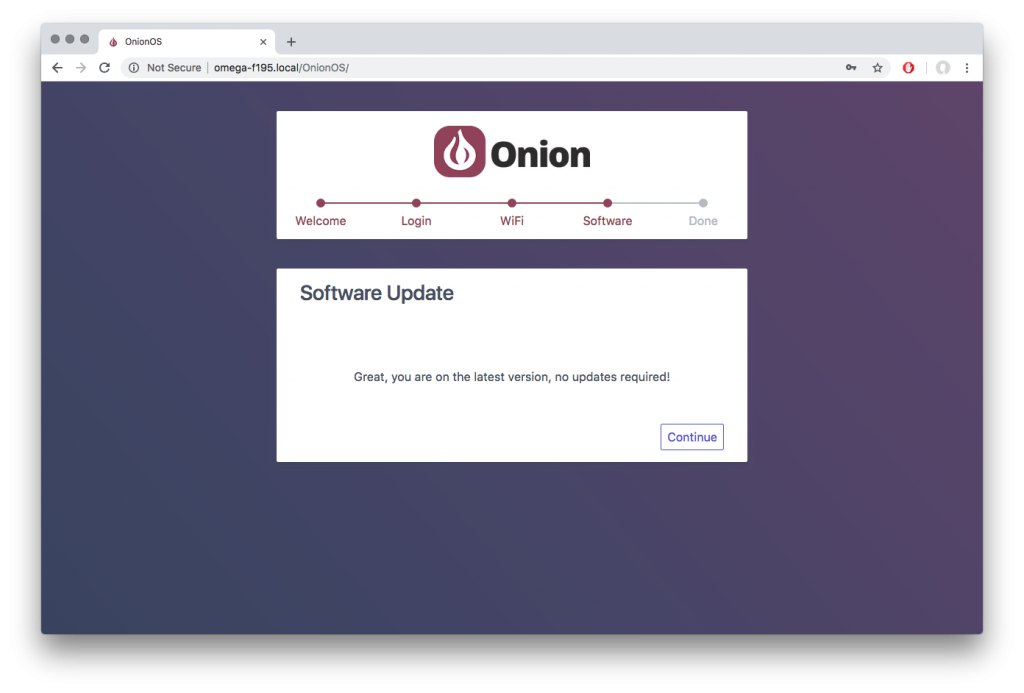
If updates ARE available, you’ll be able to update by clicking the Update Now button.
Something really important to remember about the update process: it’s absolutely critical that you keep your Omega plugged in and powered on during the update process. The whole process will last about 5 minutes and then you’ll be ready to start making awesome things with your Omega:
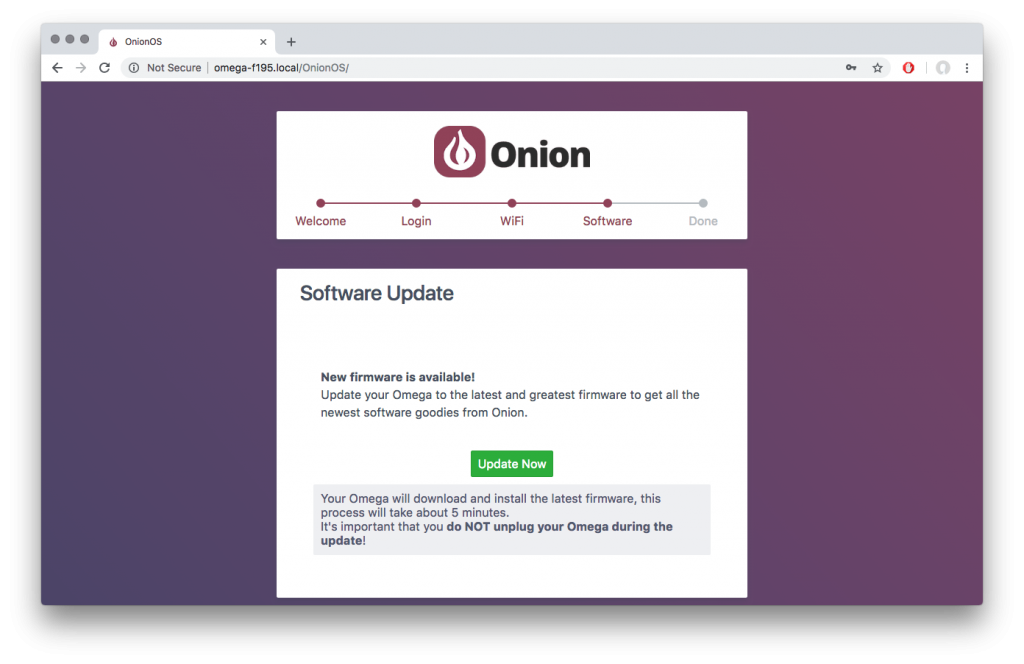
Your Omega will first download the updates:
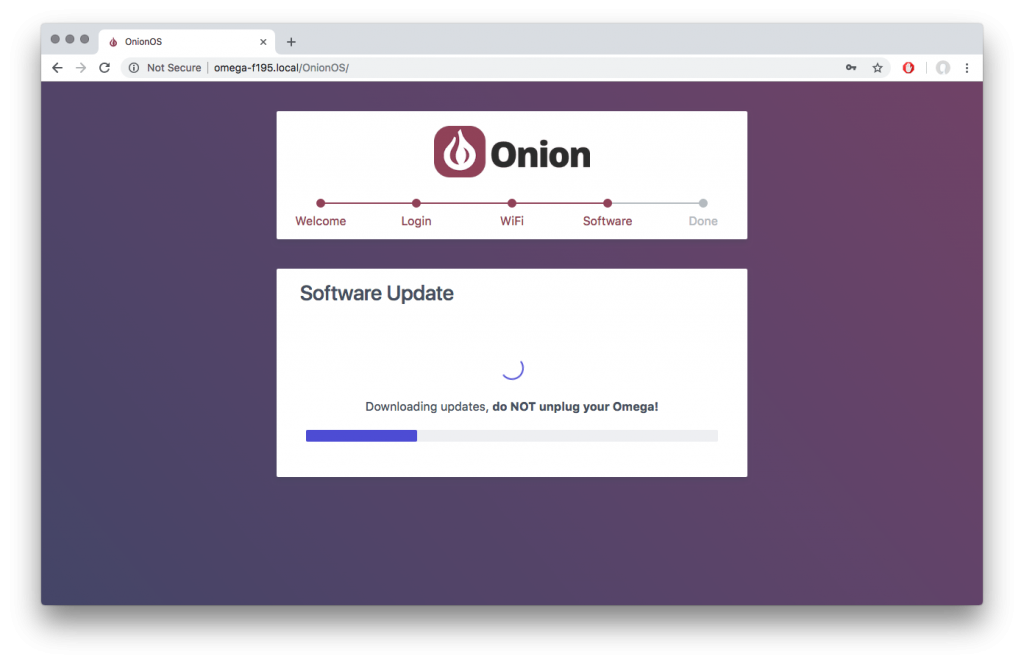
Then it will start installing them, the LED on your Omega will be blinking at this point
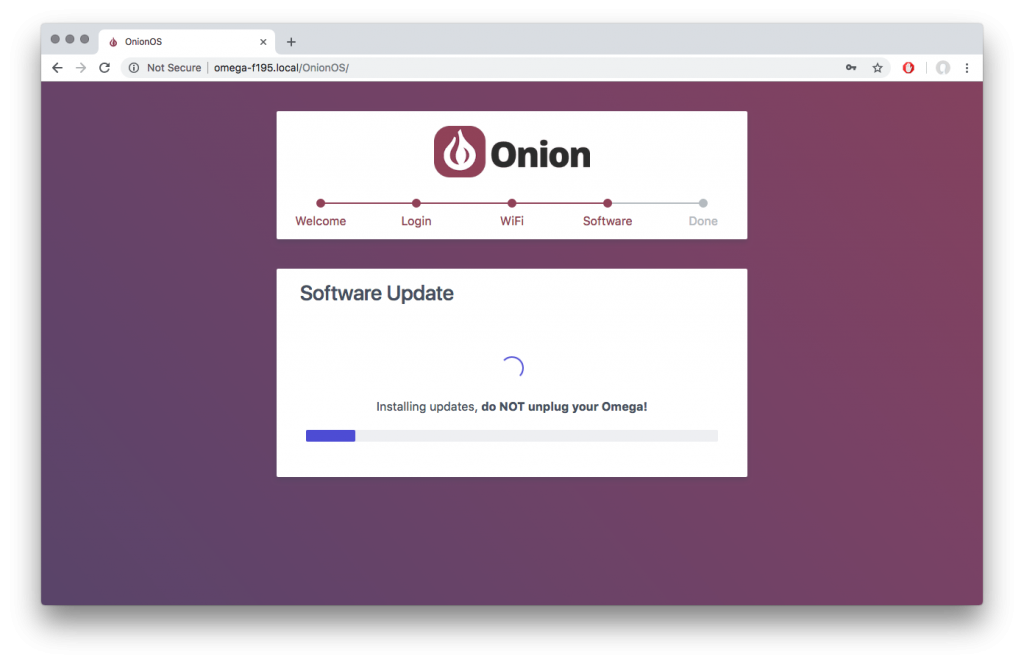
Finally, your Omega will reboot and initialize the new software. You’ll know everything is done when the LED on your Omega stops blinking and remains on. When that happens, press Continue.
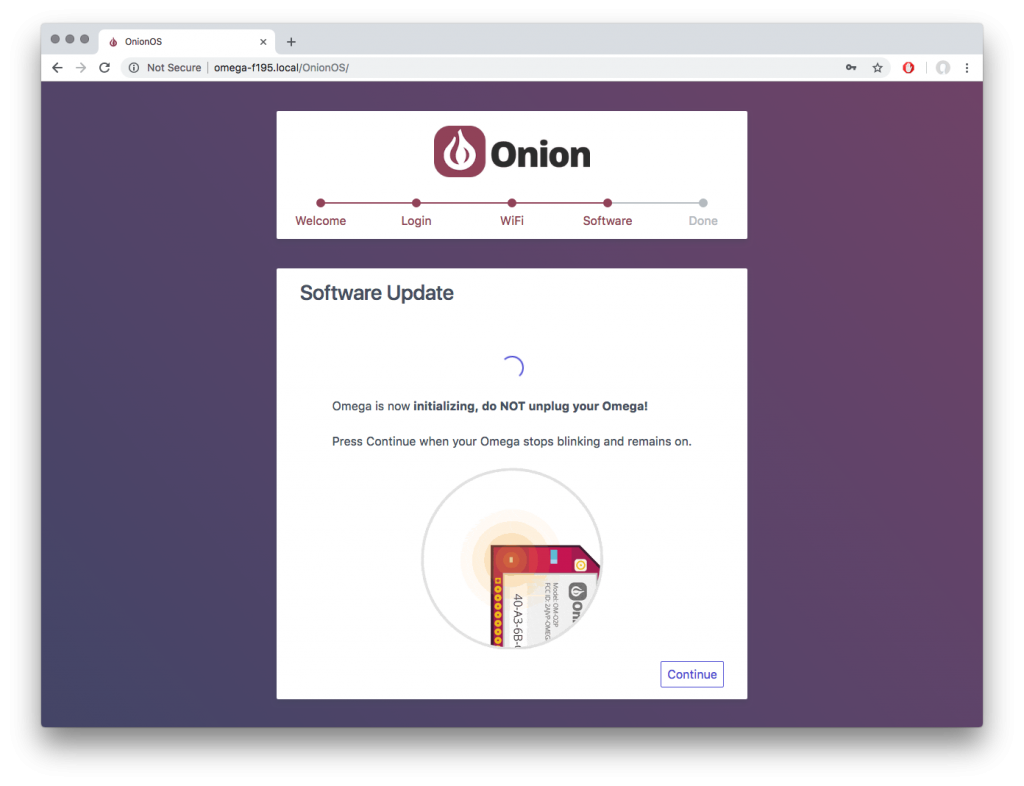
All Done
That brings us to the end of the Setup Wizard, your Omega is now configured and ready to go! Press Enter OnionOS to close the Setup Wizard and open OnionOS.
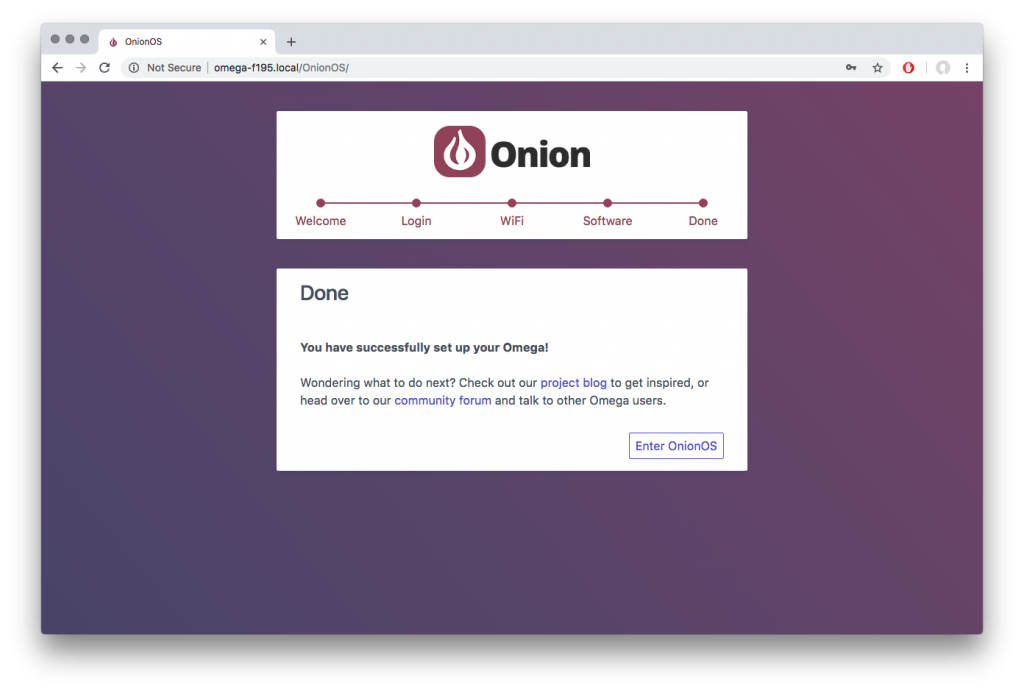
This final step updates the Omega’s configuration to indicate that the first time setup has been completed. Afterwards, when you navigate to your Omega’s address, you’ll see OnionOS. If you ever feel like going through the Setup Wizard again, run
uci set onion.console.setup='0' ; uci commit onionon your Omega’s command line and the Setup Wizard will be back.
Since you’ve gotten to OnionOS through the Setup Wizard, you can skip ahead to the Welcome to OnionOS section.
Getting to OnionOS
If you’ve previously gone through the Setup Wizard, then your Omega will be connected to your WiFi network, and you’ll be able to directly access OnionOS.
Make sure your Omega is on the same network as your computer and then you can point your browser to http://omega-XXXX.local/, where XXXX are the last four digits from your Omega’s sticker (If you’re curious, learn more about the Omega’s sticker here).
A small but important note, the
http://omega-XXXX.local/address will work out of the box on Macs and Linux systems with zeroconf services. For Windows machines, you’ll need to install Apple’s Bonjour Service before it will work.
If the http://omega-XXXX.local/ address does not work for you, find the Omega’s IP address through the command line and enter the IP address into your browser.
You’ll be presented with a login screen:
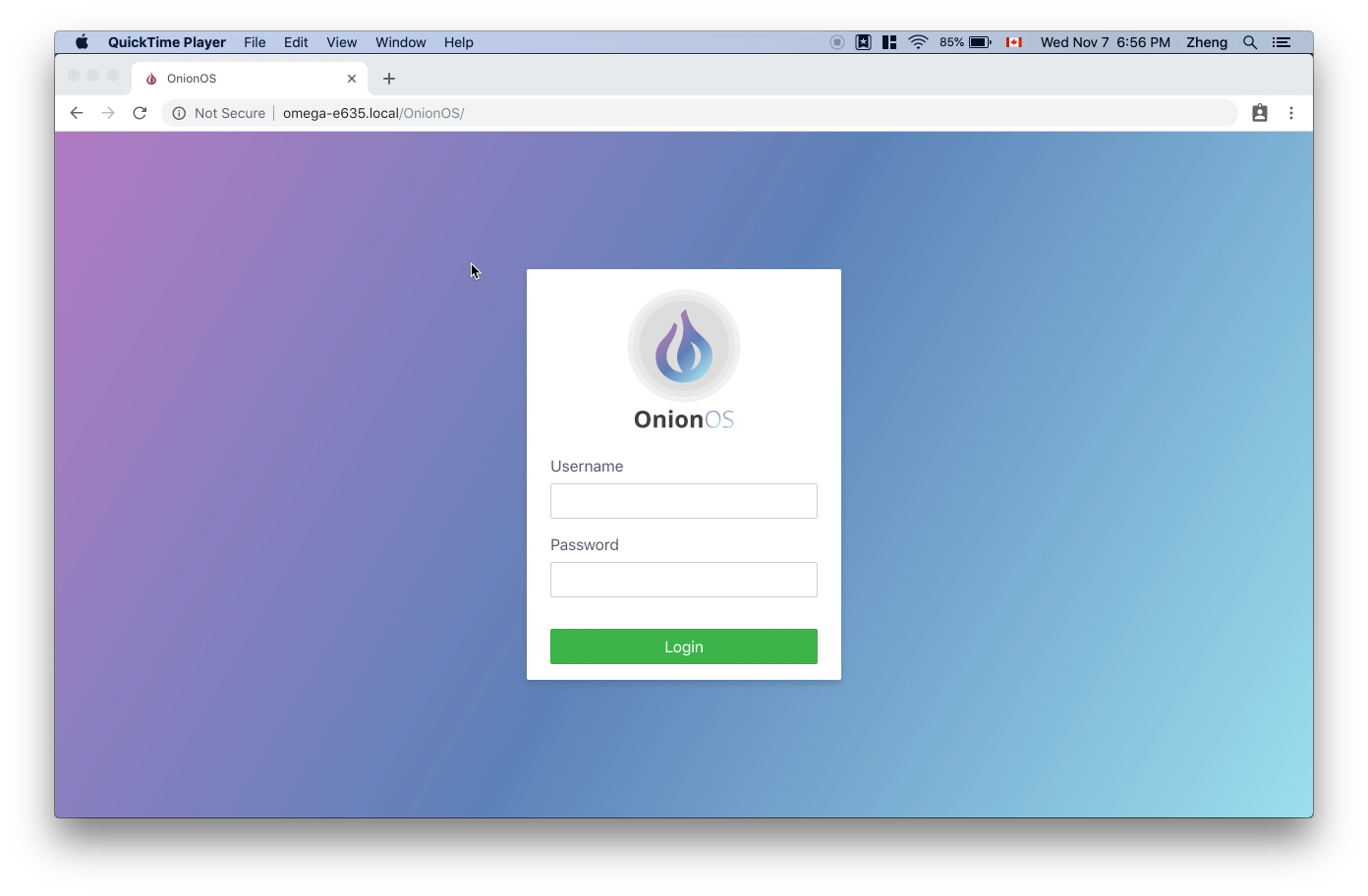
The default credentials are:
username: root
password: onioneer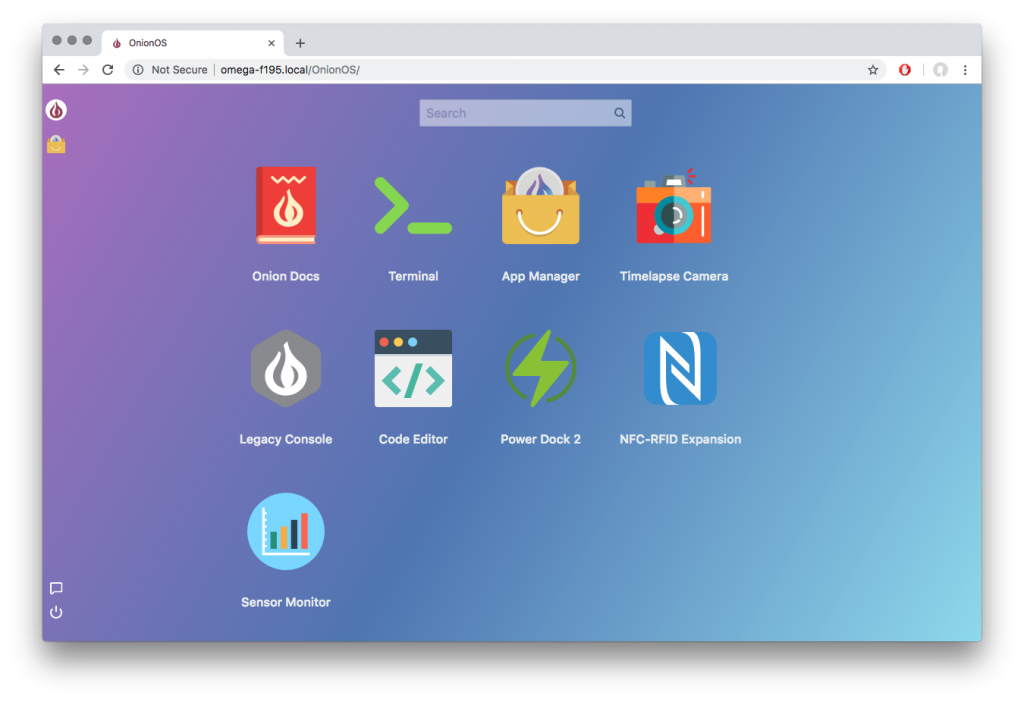
Welcome to OnionOS
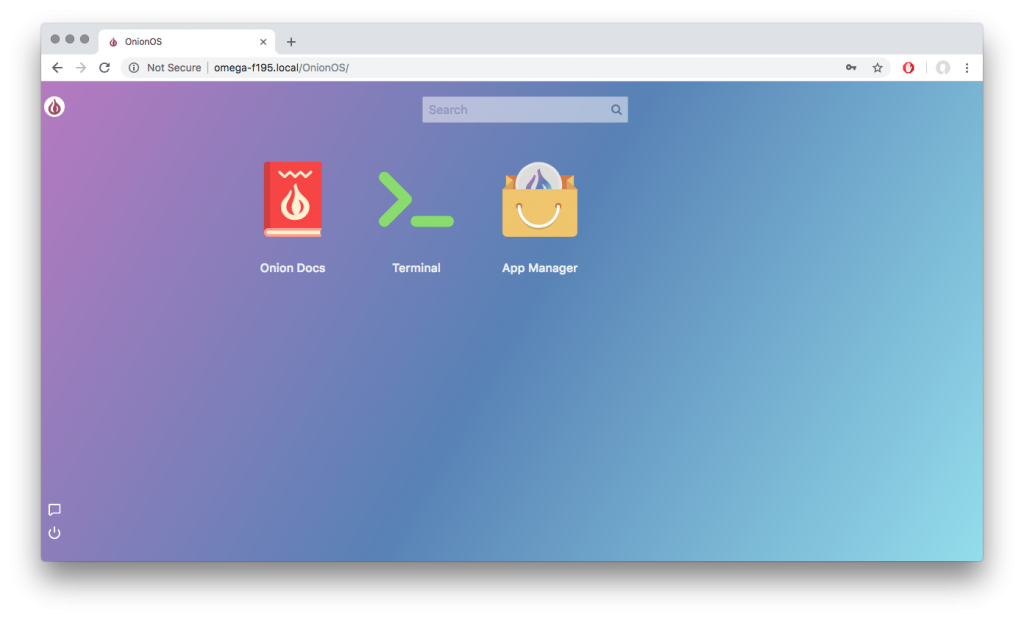
To open an App, click on the app icon. The app will open in a full-screen view, and its icon will appear in the sidebar: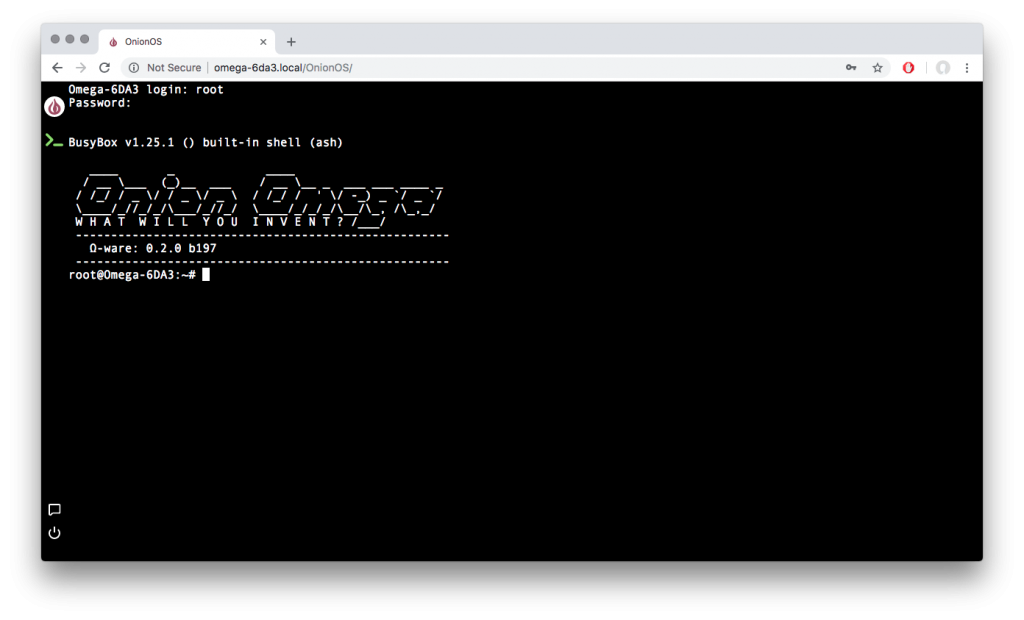
Icons of all open apps will show up in the sidebar.
To go back to the Home screen, click the Onion icon at the top of the sidebar:
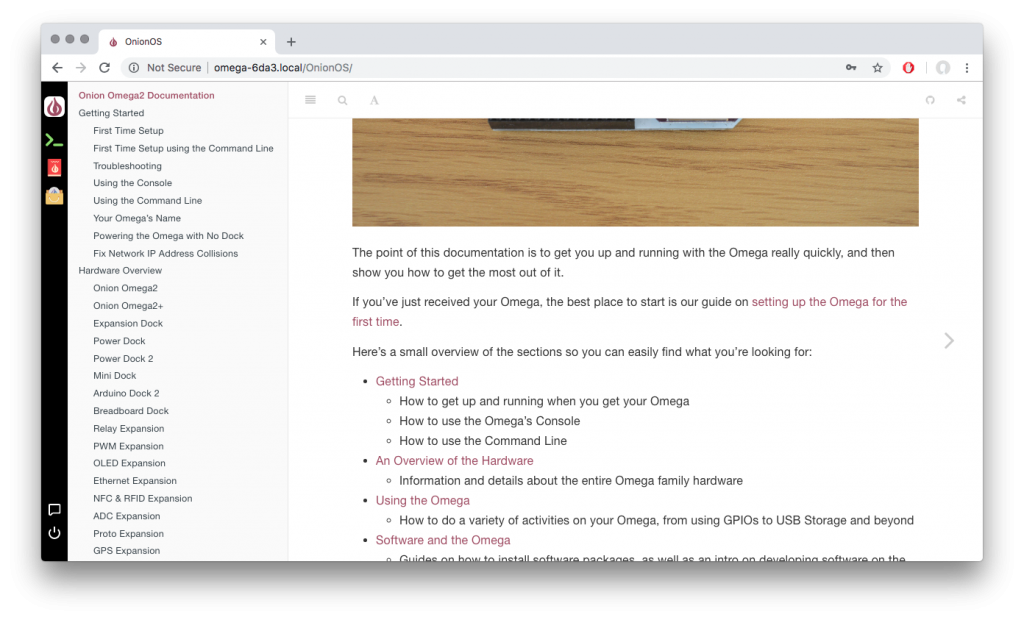
To switch between Apps, just click on the desired App’s icon in the sidebar:
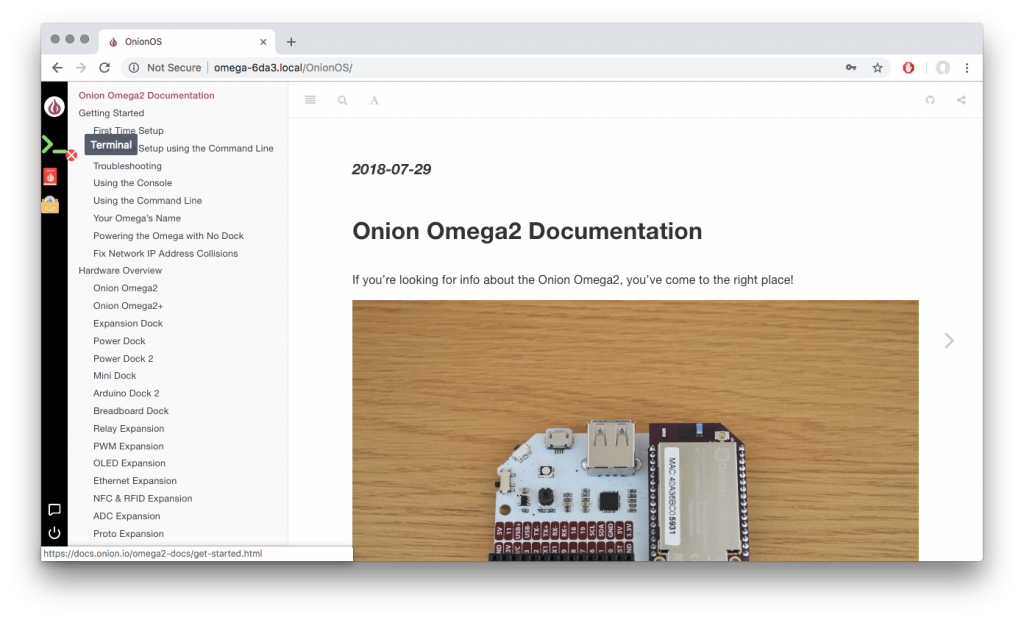
App Manager
Let’s open up the App Manager and see what Apps are available for OnionOS. Click the App Manager icon on the home screen

The App Manager will check which apps are available and display a list.
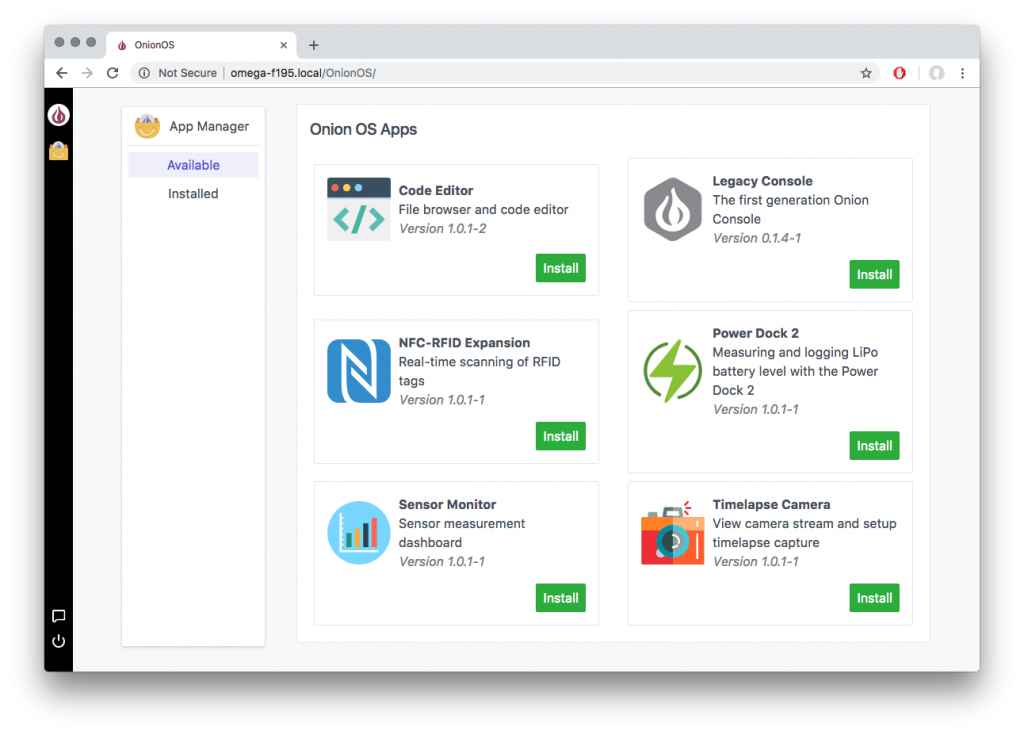
Installing Apps
To install an App, click the Install button. The button will show a loading animation and the rest of the Install buttons will be disabled until the App has been installed.

Once the App has been installed, you can go back to the OnionOS home page and your newly installed app will automatically show up!
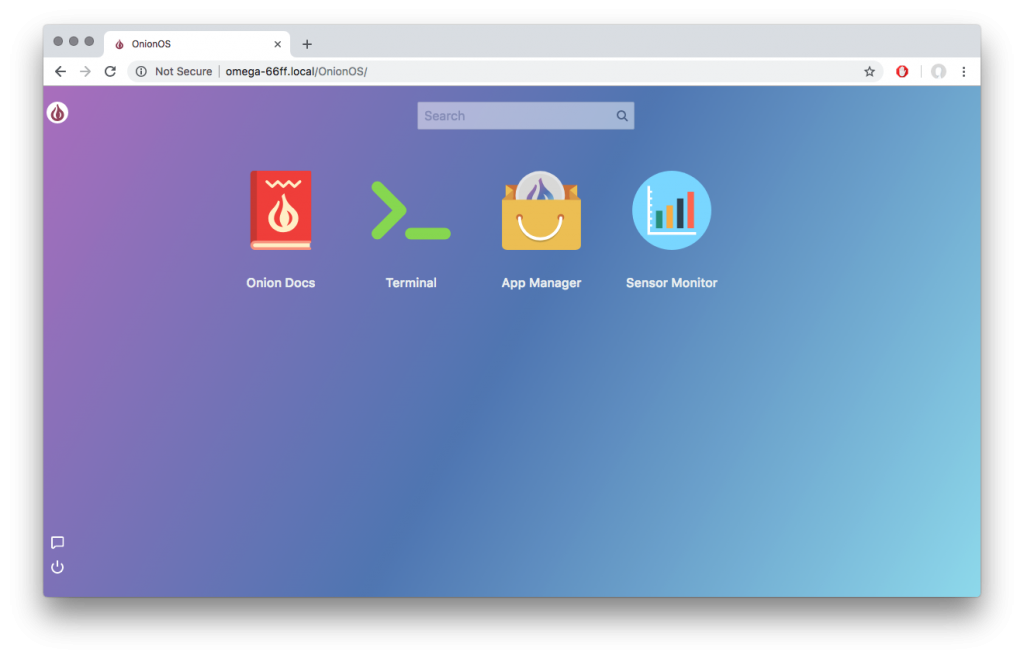
A few more installations later, and the home screen won’t look so sparse!

Removing an App
To remove an installed App, go back to the App Manager. You’ll notice your Installed Apps now have Remove buttons next to them.
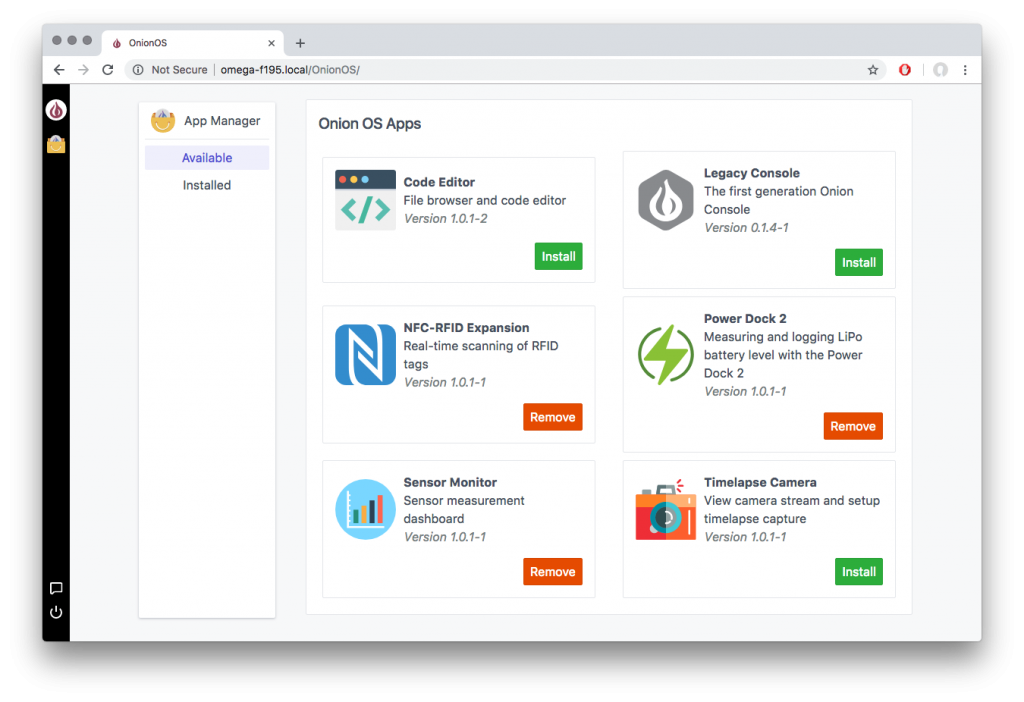
Click the Remove button to uninstall an App. The button will show a loading animation and the rest of the buttons will be disabled until the App has been uninstalled.
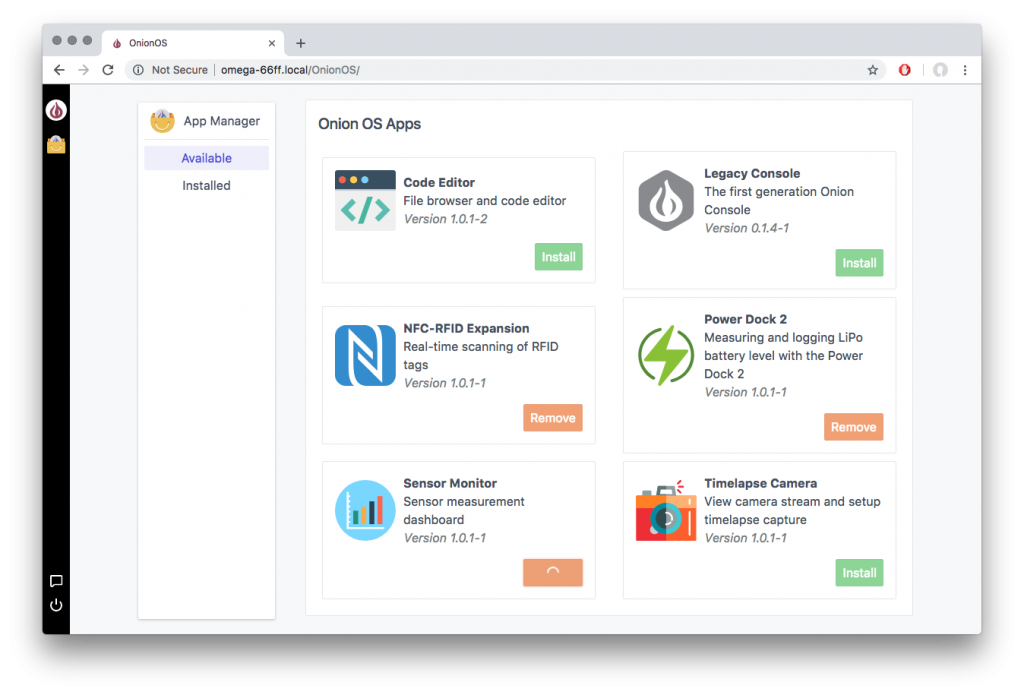
Once that’s done, head back to the OnionOS home screen and you’ll notice the uninstalled App is gone!
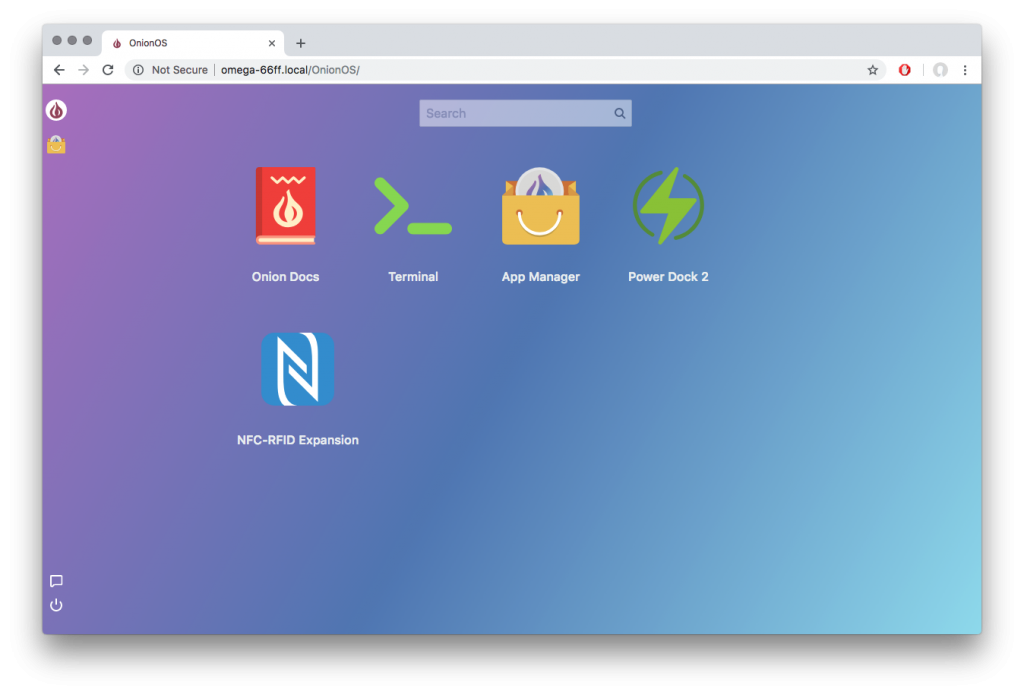
Code Editor
The Code Editor app can be your main development tool for your Omega. It features with a file manager and a text editor that supports syntax highlighting for 40+ languages, opening multiple files, and screen splitting. Use it to browse the Omega’s entire filesystem and easily edit files – perfect for development.
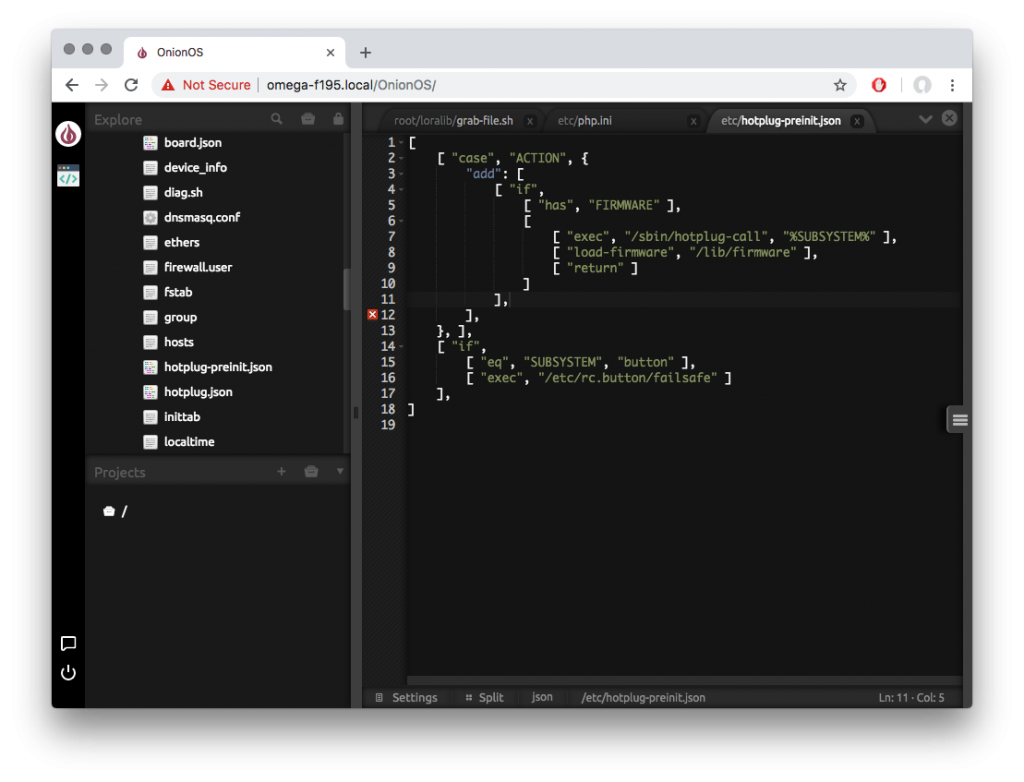
The Code Editor is based on the Codiad Web IDE and can be installed using the App Manager.
The default login credentials are:
username: root
password: onioneer